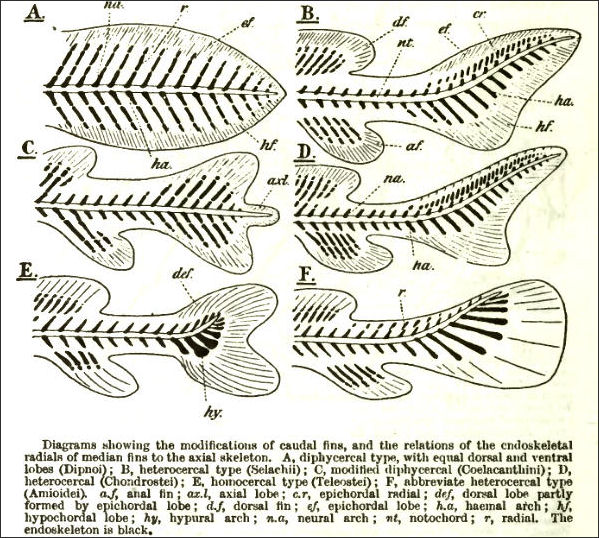Ves·tig·i·al
adjective
surviving, residual, leftover, lingering
(of an organ or part of the body) degenerate, rudimentary, or atrophied, having become functionless in the course of evolution.
Thus, the coccyx is not a vestigial tail at all because
a) as far back as we can go this feature was never a tail, never atrophied, or “degenerated” from something longer. Even in the alleged earliest human species the coccyx is short, and
b) because the coccyx is known to be there to support a ganglia of nervous tissue covered in grey matter (like a little brain - coccygeal plexus) and not only is the connective source of the two coccygeal and also sciatic nerves, but assists (and is necessary to) the autonomic urogenital functions. In its parasympathetic stimulated phase it is essential to our sexuality, thus mating, thus perpetuation and survival of the species. It carries the sensation/information through the axons to the central nervous system and back through transmission across the dentrites.
Gray's anatomy for students, Philadelphia, Elsevier/Churchill Livingstone, p. 423, tells us that the ganglia attached and supported there contribute to the innervation of the pelvic and genital organs. The nerves “regulate the emptying of the bladder, control the opening and closing of the internal urethral sphincter, motility in the rectum as well as sexual functions.” Thus they maintain their function.
Roberto Spiegelmann, Edgardo Schinder, Mordejai Mintz, and Alexander Blakstein, in "The human tail: a benign stigma," Journal of Neurosurgery, 63: 461-462 (1985) explain that “True human tails are rarely encountered in medicine. At the time when Darwin's theory of evolution was a matter of debate, hundreds of dubious cases were reported. The presence of a tail in a human being was considered by evolutionists as an example that "ontogeny recapitulates phylogeny." But the theory that ontogeny recapitulates phylogeny has been disproven in modern times. The main proponent of this notion was Ernst Heakel who had produced a document showing the similarity of embryos allegedly demonstrating that embryos represent a fish like stage of evolution. We know now that Heakel had perpetrated an intentional fraud, and that these drawings were enhanced to produce the illusion of support for the theory. The premise is not true. Ontogeny does not recapitulate phylogeny. The alleged “gills” are just fat folds on the embryo and all non-egg laying animal embryos receive their oxygen through the blood of the mother, and in no other way.
"Pseudotails" which are often found in other locations on the lower back, are obvious aberrations since they are often associated with anomalies (remember and do not be fooled, the exception is never the rule). What is considered a “true tail” (extending from the coccyx) is far more rare, and together (both kinds) have only been observed on around 100 occasions from among the many millions of births. Secondly, they are not even a real tail (they totally lack vertebrae). The Journal confirms this. In all studies done all these alleged tails lacked “…bone, cartilage, notochord, and spinal cord.”
According to Allan Joel Belzberg, Stanley Terence Myles, and Cynthia Lucy Trevenen, in "The Human Tail and Spinal Dysraphism," Journal of Pediatric Surgery, 26: 1243-1245 (October, 1991), these extremely rare genetic abnormalities in humans have no spinal cord at all. After many surgeries they have determined they are nothing more than a “central core of mature fatty tissue divided into small lobules by thin fibrous septa. Small blood vessels and nerve fibers are scattered throughout. Bundles of striated muscle fibers, sometimes degenerated, tend to aggregate in the center.” This is nothing like any tail we would commonly find on any kind of ape (or any other animal for that matter) and NEVER have found this to be present in any demonstrable ancient ancestor.
And as far as the more common yet still extremely rare pseudo-tail formation, according to Se-Hyuck Park, Jee Soon Huh, Ki Hong Cho, Yong Sam Shin, Se Hyck Kim, Young Hwan Ahn, Kyung Gi Cho, Soo Han Yoon, "Teratoma in Human Tail Lipoma," Pediatric Neurosurgery, 41:158-161 (2005), it “has no embryological relationship to human tail development, but is any variable abnormal caudal tail-like structure or protrusion." Nothing more…not a tail…not indicative of some remote unfounded assumption about the past, not a degeneration, nor is it atrophied…
If these phenomena were truly vestigial in nature we should expect to see at least some vestige of vertebrae or controllable movement but alas we do not. Science offers no demonstrable evidence at all that the human coccyx is anything more than what it is, and likewise demonstrates no evidence whatsoever that it ever was anything other than what it is now.
The entire alleged theory that it is a vestigial organ is a contrived myth (science fiction) based on the acceptance of the hypothesis alone. In the 2012 paper, “Spectrum of human tails: A report of six cases”, four out of the six of the alleged “tails” were higher in the lumbar region, and three of these babies sadly had spinal bifida, one had the appendage protruding from its buttock, and the another from the sacral region. And according to the report 5 out the six allegedly vestigial tails were not even connected to the spine.
Please stop brainwashing our children with this heinous fairytale. If you have been brainwashed by it please wake up now and simply look at the actual data and block the hypothesis based “interpretation” out of your thinking?
adjective
- forming a very small remnant of something that was once much larger or more noticeable.
surviving, residual, leftover, lingering
- In BIOLOGY
Thus, the coccyx is not a vestigial tail at all because
a) as far back as we can go this feature was never a tail, never atrophied, or “degenerated” from something longer. Even in the alleged earliest human species the coccyx is short, and
b) because the coccyx is known to be there to support a ganglia of nervous tissue covered in grey matter (like a little brain - coccygeal plexus) and not only is the connective source of the two coccygeal and also sciatic nerves, but assists (and is necessary to) the autonomic urogenital functions. In its parasympathetic stimulated phase it is essential to our sexuality, thus mating, thus perpetuation and survival of the species. It carries the sensation/information through the axons to the central nervous system and back through transmission across the dentrites.
Gray's anatomy for students, Philadelphia, Elsevier/Churchill Livingstone, p. 423, tells us that the ganglia attached and supported there contribute to the innervation of the pelvic and genital organs. The nerves “regulate the emptying of the bladder, control the opening and closing of the internal urethral sphincter, motility in the rectum as well as sexual functions.” Thus they maintain their function.
Roberto Spiegelmann, Edgardo Schinder, Mordejai Mintz, and Alexander Blakstein, in "The human tail: a benign stigma," Journal of Neurosurgery, 63: 461-462 (1985) explain that “True human tails are rarely encountered in medicine. At the time when Darwin's theory of evolution was a matter of debate, hundreds of dubious cases were reported. The presence of a tail in a human being was considered by evolutionists as an example that "ontogeny recapitulates phylogeny." But the theory that ontogeny recapitulates phylogeny has been disproven in modern times. The main proponent of this notion was Ernst Heakel who had produced a document showing the similarity of embryos allegedly demonstrating that embryos represent a fish like stage of evolution. We know now that Heakel had perpetrated an intentional fraud, and that these drawings were enhanced to produce the illusion of support for the theory. The premise is not true. Ontogeny does not recapitulate phylogeny. The alleged “gills” are just fat folds on the embryo and all non-egg laying animal embryos receive their oxygen through the blood of the mother, and in no other way.
"Pseudotails" which are often found in other locations on the lower back, are obvious aberrations since they are often associated with anomalies (remember and do not be fooled, the exception is never the rule). What is considered a “true tail” (extending from the coccyx) is far more rare, and together (both kinds) have only been observed on around 100 occasions from among the many millions of births. Secondly, they are not even a real tail (they totally lack vertebrae). The Journal confirms this. In all studies done all these alleged tails lacked “…bone, cartilage, notochord, and spinal cord.”
According to Allan Joel Belzberg, Stanley Terence Myles, and Cynthia Lucy Trevenen, in "The Human Tail and Spinal Dysraphism," Journal of Pediatric Surgery, 26: 1243-1245 (October, 1991), these extremely rare genetic abnormalities in humans have no spinal cord at all. After many surgeries they have determined they are nothing more than a “central core of mature fatty tissue divided into small lobules by thin fibrous septa. Small blood vessels and nerve fibers are scattered throughout. Bundles of striated muscle fibers, sometimes degenerated, tend to aggregate in the center.” This is nothing like any tail we would commonly find on any kind of ape (or any other animal for that matter) and NEVER have found this to be present in any demonstrable ancient ancestor.
And as far as the more common yet still extremely rare pseudo-tail formation, according to Se-Hyuck Park, Jee Soon Huh, Ki Hong Cho, Yong Sam Shin, Se Hyck Kim, Young Hwan Ahn, Kyung Gi Cho, Soo Han Yoon, "Teratoma in Human Tail Lipoma," Pediatric Neurosurgery, 41:158-161 (2005), it “has no embryological relationship to human tail development, but is any variable abnormal caudal tail-like structure or protrusion." Nothing more…not a tail…not indicative of some remote unfounded assumption about the past, not a degeneration, nor is it atrophied…
If these phenomena were truly vestigial in nature we should expect to see at least some vestige of vertebrae or controllable movement but alas we do not. Science offers no demonstrable evidence at all that the human coccyx is anything more than what it is, and likewise demonstrates no evidence whatsoever that it ever was anything other than what it is now.
The entire alleged theory that it is a vestigial organ is a contrived myth (science fiction) based on the acceptance of the hypothesis alone. In the 2012 paper, “Spectrum of human tails: A report of six cases”, four out of the six of the alleged “tails” were higher in the lumbar region, and three of these babies sadly had spinal bifida, one had the appendage protruding from its buttock, and the another from the sacral region. And according to the report 5 out the six allegedly vestigial tails were not even connected to the spine.
Please stop brainwashing our children with this heinous fairytale. If you have been brainwashed by it please wake up now and simply look at the actual data and block the hypothesis based “interpretation” out of your thinking?


